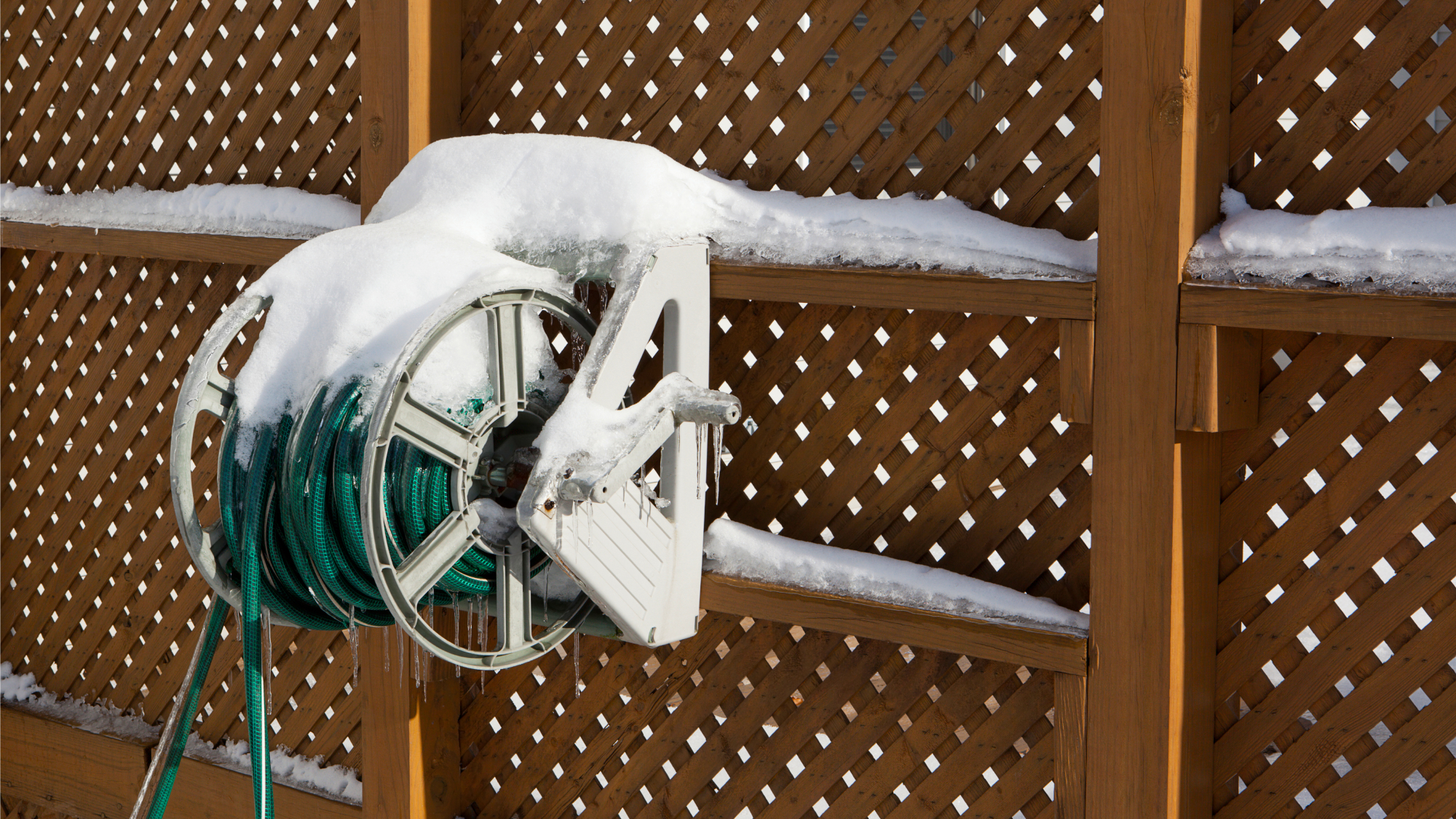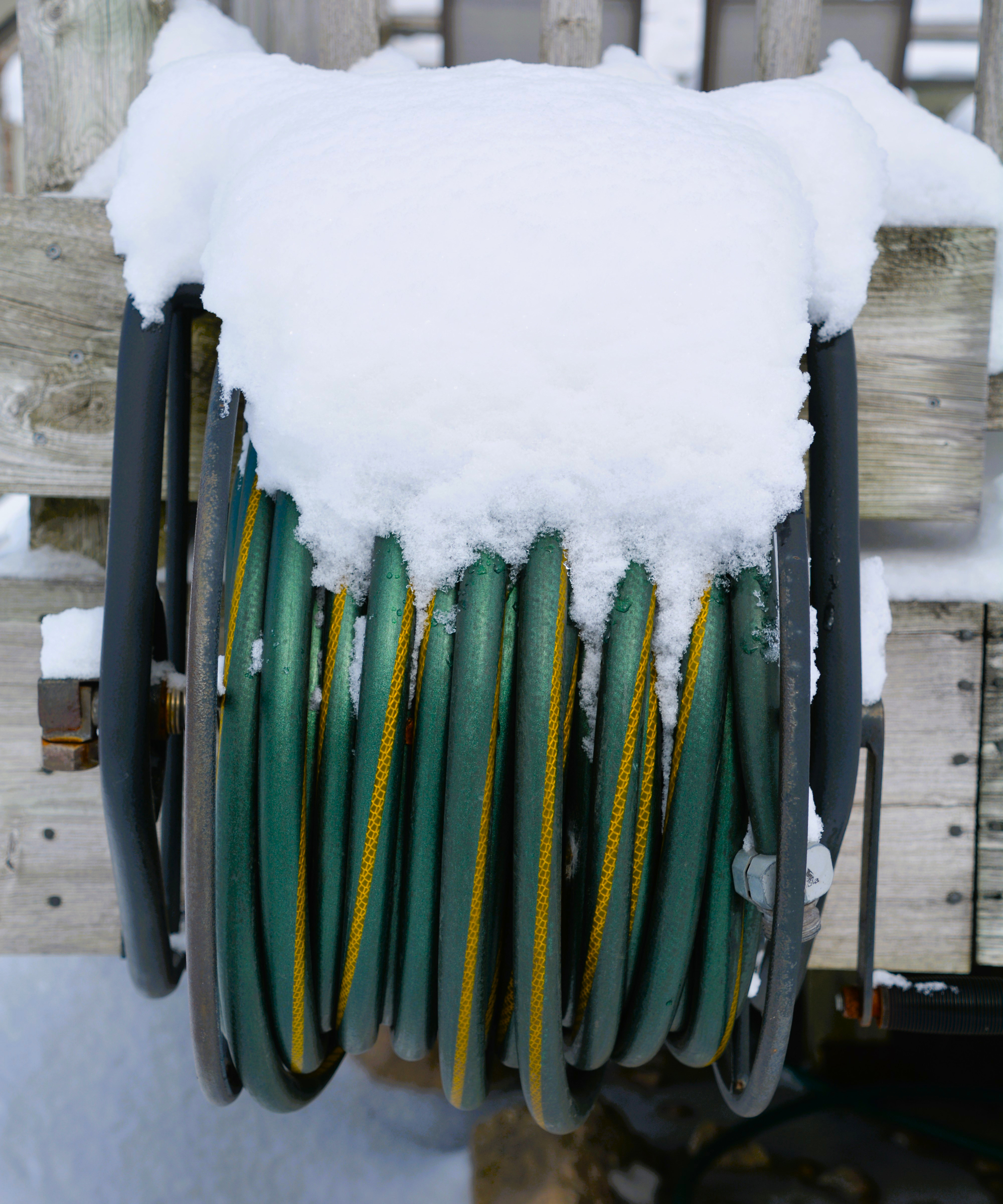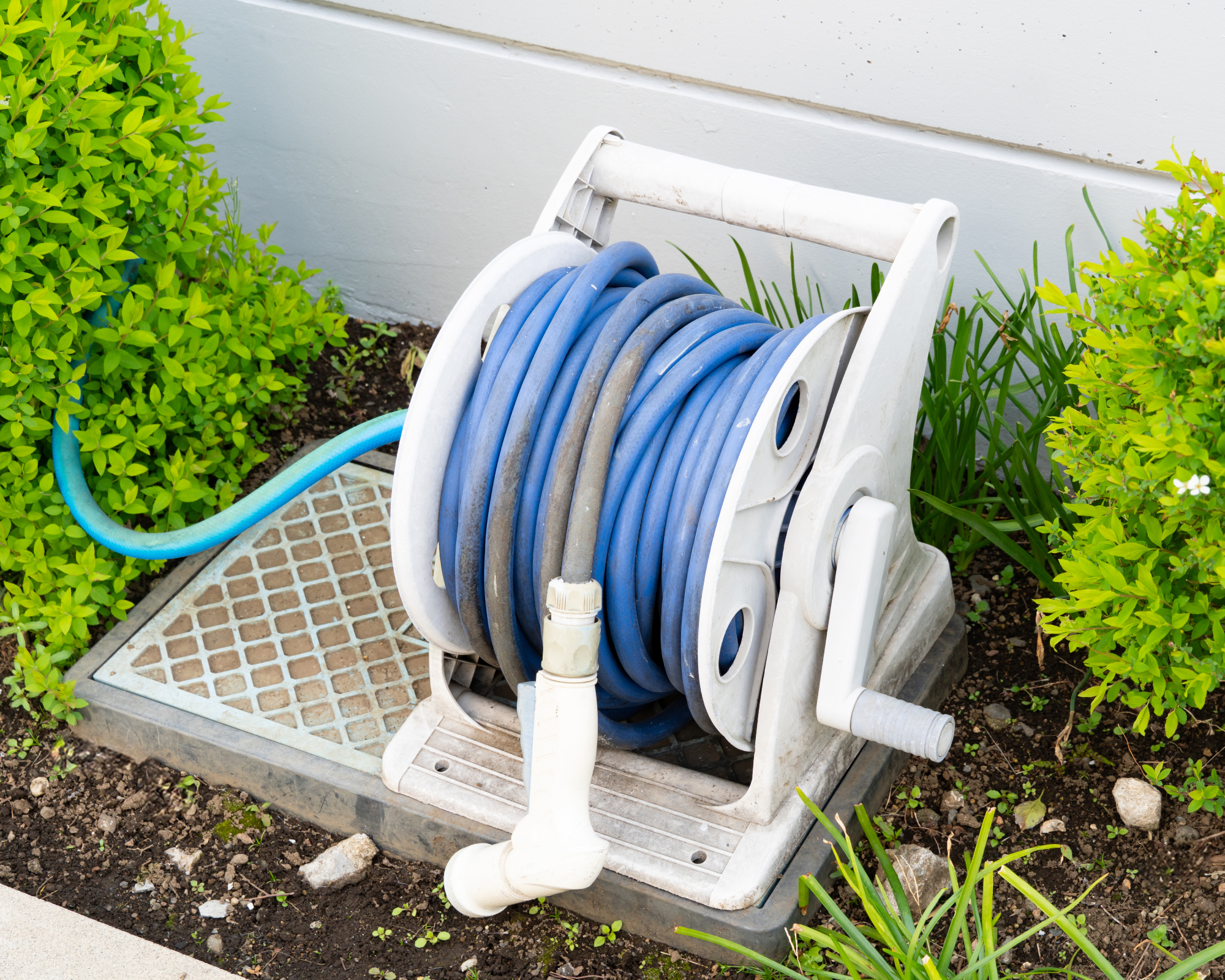Stop Hoses From Cracking in the Cold! Here's What You Need to Do Now to Protect Them This Winter
Protect hoses from cracking due to winter cold. Just follow these simple tips for a hose that will last for years to come.


Just think how much harder yard care would be without a garden hose. You’d be filling up your watering can dozens of times each day! Hoses not only make it easy to water your plants, but they can be used for other garden tasks, like washing bugs off leaves, cleaning dirt off the patio, and filling up the kiddie pool.
Our garden hoses better work well, considering how much we use them and how they cost these days. But keep in mind that the quality of the hose you buy will also impact how long your hose will last. A good-quality garden hose that is appropriately cared for can last a decade, while a cheaper version may not last half that long – even with the best maintenance.
Given our reliance on our garden hoses, it's important to protect them from damage over the winter. Whether you decide to store your hose in the garage for the cold season or leave it outside to face the weather, there are ways of protecting it from winter’s worst. Here's how to keep your hose in tip-top shape over winter and for years to come.
Best Way to Protect a Hose in Winter
The key to keeping a hose happy and healthy in cold weather is to store it dry. This means you need to get all of the water out. Why? Because water expands when it freezes. I learned this the hard way growing up in Alaska when the water pipes burst if the water froze! You don’t want this sad ending for your loyal hose.
So here's what you need to do now before the weather turns to prepare your hose for winter.

1. Dry out the hose
Gravity is your ally when it comes to drying out the inside of your hose. Disconnect it from the water spigot and remove any attachments like nozzles or sprinklers.
Hang the hose over a fence or tree branch so that water exits both ends. It will take more than a minute for the hose to dry out, so don’t be in a hurry.
Sign up for the Gardening Know How newsletter today and receive a free copy of our e-book "How to Grow Delicious Tomatoes".
2. Coil the hose
You don’t want that long hose taking over your garage floor in winter. If you have a hose reel, use it to coil the hose. If you don't have one, there are tons of different styles of hose reels on Amazon that will make storing your hose so much neater.
Make sure the hose doesn’t twist as you reel it in. Kinks left over the winter months can damage your hose. If you don’t have a reel, simply coil the hose and tie it together with cord or wire. Alternatively, you can install pegs in your garage to create a simple DIY hose hanger.

3. Store the hose inside
The best place to store a hose in winter is indoors in a cool, dry area. This could be a garage, a lean-to, a garden shed, or even a mudroom.
You don’t want to select a room that is humid or sunny. The idea is to protect the coiled hose from sunlight as well as cold, so don’t put it in a greenhouse or anywhere with skylights.
How to Store a Hose Outdoors
Now for the million dollar question: Can I leave my hose outdoors? Yes, but there are limitations. It’s really hard to protect a hose that is stretched across the landscape. Even if you plan to store your hose outside for the winter, you need to dry it out and coil it first. Then you need to find a safe spot to protect it from the cold, wet weather.
One way is to use a hose reel and purchase a protective reel cover or buy an enclosed hose reel, like this one from Amazon. Another option is to buy a large, weather-proof container and put it on your deck or patio. This pretty faux ceramic pot with a lid from Grandin Road is designed to store your hose in style.
Store the coiled hose in either your desired container, then tuck it into a safe spot out of the winter wind. Under a patio or on the porch is an ideal spot.

Don’t Forget the Faucet!
In addition to your hose, you also need to protect your outdoor water faucet from cold winter weather. Any water left in it may freeze and crack the pipes – an expensive repair with a cheap and simple solution! Here’s how to drain your spigot to avoid major problems.
First, cut off the water to the spigot by using the shut-off valve inside the house. Close this first to shut off the water. Then, open the spigot in the yard all the way to let the water drain completely. Place an insulated cover, like this nifty faucet sock from Amazon, to protect it from freezing temperatures.
What If I Live Somewhere Warm?
If you live in a warmer USDA growing zone or region where the weather never dips below freezing, you don’t have as much to worry about. This is my case in San Francisco. We leave the hose outside year round and it's perfectly fine.
However, it’s still important to check the hose connections and outdoor faucet for damage from time to time. Injury to the actual hose is less likely, but damage can still occur.

Teo Spengler is a master gardener and a docent at the San Francisco Botanical Garden, where she hosts public tours. She has studied horticulture and written about nature, trees, plants, and gardening for more than two decades, following a career as an attorney and legal writer. Her extended family includes some 30 houseplants and hundreds of outdoor plants, including 250 trees, which are her main passion. Spengler currently splits her life between San Francisco and the French Basque Country, though she was raised in Alaska, giving her experience of gardening in a range of climates.